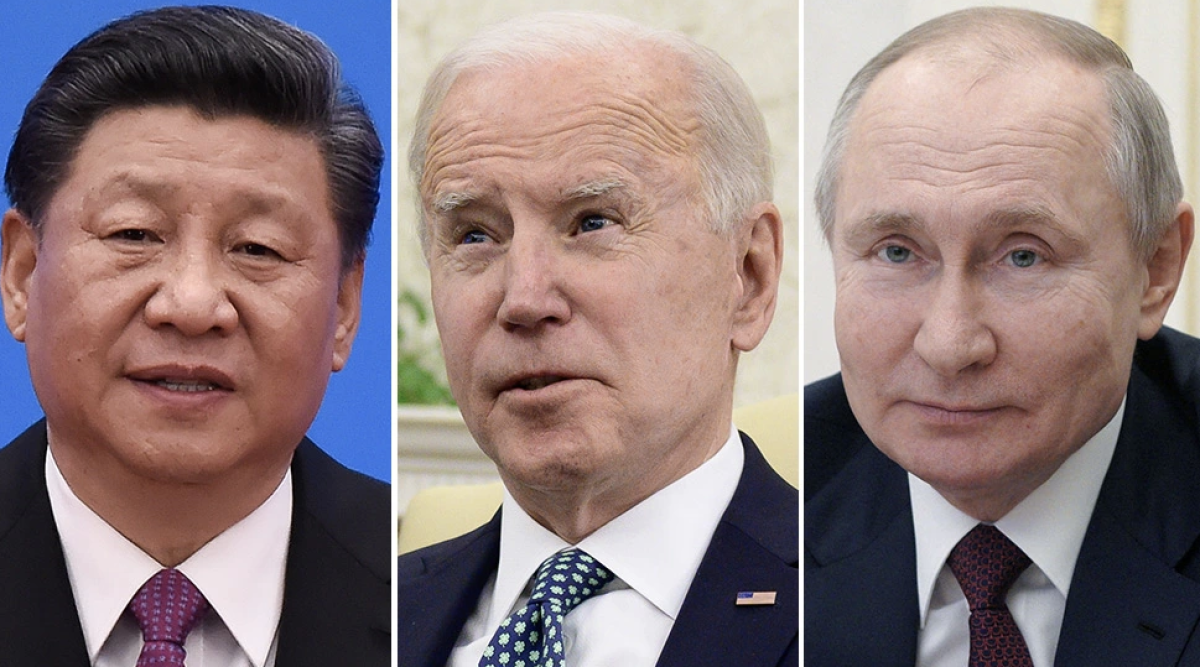Peter Huessy
Introduction
The nuclear age is now entering its 79th year. Throughout this era, the US nuclear deterrent strategy has been updated and fine-tuned, primarily to sustain a highly credible deterrent in a changing world. According to the former Commander of US Strategic Command, Admiral Charles Richard, and his top-notch successor, the United States and its allies are now facing some formidable nuclear challenges, not the least of which is confronting for the first time in its history, two peer nations both armed with nuclear weapons.
The bad news is the nuclear threats the US faces are indeed growing. The good news is the United States has the means to maintain current and sustain future deterrent requirements if the country follows these two commander’s wise counsel.
A New Nuclear Deterrent Strategy
From their 2021-3 Congressional testimony, respectively, one can organize a new deterrent strategy around six planks. These are (1) conventional deterrence will not hold if nuclear weapons are part of the mix of weapons used by our adversaries; (2) theUS would be out of the nuclear deterrent business if nuclear modernization does not smartly proceed not the least of which is due to our legacy nuclear systems being between 40-60 years old and cannot be sustained over time; and (3) the insurance hedge the US adopted in 2010 reflected conditions at the time and needs to be changed, as especially China is expanding its nuclear deterrent at a “breath-taking “ pace.
The further planks are: (4) Putin and Xi both appear to have adopted an “escalate to win” strategy of threatening to introduce the limited use of nuclear weapons into a conventional conflict which as Robert Haffa warned is precisely what the US needs to avoid, because in the view of Russia and China, the introduction of nuclear weapons is the best means of forcing the US and its allies to standdown; (5) arms control, while valuable at times, does not adequately address any of these challenges and as such can be a serious distraction especially if the objective is global zero or nuclear abolition; and (6) space dominance and robust missile and air defenses have both emerged as critical to enhanced deterrence, necessary for the United States to adopt in order to maintain its leadership of the free world.
Can Deterrence Hold?
On the first point, Admiral Richards in his March 9, 2022 Senate Armed Services (SASC) testimony explained “Every operational plan in the Department of Defense and every other capability we have rests on an assumption that strategic deterrence is holding. And in particular that nuclear deterrence is holding. If strategic or nuclear deterrence fails, no other plan and no other capability in the Department of Defense is going to work as designed.”

This March 19, 2021, photo composite shows leaders of the world’s three super powers (from left): Chinese President Xi Jinping, U.S. President Joe Biden, and Russian President Vladimir Putin.
In August 2021, the Admiral made this point even more explicit: “Every operational plan in the DoD and every other capability we have, has an implicit assumption that strategic deterrence will hold. None of our plans and no other capability will work as designed if strategic deterrence fails. This is not well understood.”
Modernize or Disarm?
The Strategic Command head then further warned that the “the nation's nuclear forces underpin integrated deterrence…and enable the U.S., our allies, and our partners to confront aggressive and coercive behavior”, but without nuclear modernization to secure a credible deterrent this will put the United States out of the nuclear deterrent business, a point also echoed by former Secretary of Defense Ash Carter.
It is often not recognized, but the current nuclear forces were built not less than forty years ago and when fully replaced will be near six decades old. the Strategic Command was sustaining deterrence but doing it with “submarines built in the 80s and 90s, an air launch cruise missile built in the 80s, intercontinental ballistic missiles built in the 70s, a bomber built in the 60s, part of our nuclear command and control that predates the internet, and a nuclear weapons complex that dates back to the Manhattan era.”
Anticipating Threats
The imperative of nuclear modernization also comes from another critical factor. Admiral Richard then warned that the pacing threat of Russia and China pose a threat to “unilaterally escalate to any level of violence in any domain worldwide with any instrument of national power at any time”, a situation as previously emphasized the US has “never faced…in our history.” General Cotton also spoke about this factor, noting with respect to China: “The PRC’s rapid qualitative and quantitative expansion of military capabilities enables a shift in its strategy and requires the Department of Defense (DoD) to make immediate and significant alterations to plans and capabilities.
In an essay written for the Naval Institute’s Proceedings, the Admiral had earlier written and explained when such a shift in Chinese strategy might occur. “There is a real possibility that a regional crisis with Russia or China could escalate quickly to a conflict involving nuclear weapons, if they perceived a conventional loss would threaten the regime or state,” a rationale that underscores what General John Hyten described as a Russian “escalate to win” strategy adopted by Vladimir Putin of Russia. General Cotton echoed this concern in a May 2023 threat hearing, testifying “Russia presents a growing nuclear deterrence challenge centered on its potential perception that the threshold for regional nuclear employment is lower with low-yield systems.”
No comments:
Post a Comment